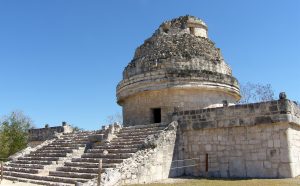Mexico City, Sep 11 (EFE).- When addressing Latin America’s urban planning challenges, it is essential to look at the relationship that pre-Columbian civilizations had with their environment, archaeologist Tomas Barrientos told EFE.
“An insight into the good and bad environmental practices of the past will allow (modern societies) to steer clear of the problems that caused pre-Columbian societies to abandon their cities and go into extinction,” the head of the Archaeological Research Center at the University of the Valley of Guatemala (UVG) said in a telephone interview.

The professor added that failure to understand a society’s carrying capacity puts it at risk of becoming unsustainable, and said that ancient societies were experts in providing access to water, employing innovative agricultural techniques and efficiently managing natural resources.
Barrientos also said that it is estimated that as many as 10 million Mayans lived in harmony in what today is Mexico, Guatemala and Belize from 300 BC to AD 900.
The Mayan crisis, according to the archaeologist, came when the culture “broke the balance with its ecosystems,” which caused a “shortage of natural resources” stemming from the “inefficient use of the existing biodiversity,” a situation that he says modern Latin American cities are repeating.”
Barrientos noted that excavations show that the water systems in pre-Columbian cities worked adequately until the arrival of the Europeans, whose “pyramidal system of hierarchy” ruined what community decision-making regarding water management had achieved.
The World Bank estimates the population density in Latin American cities at some 2,400 inhabitants per sq. km. (960 per sq. mi.), almost double the global median.
Barrientos also called attention to the more than 150 million of the region’s residents living with dangerous levels of air pollution, according to the World Health Organization.
